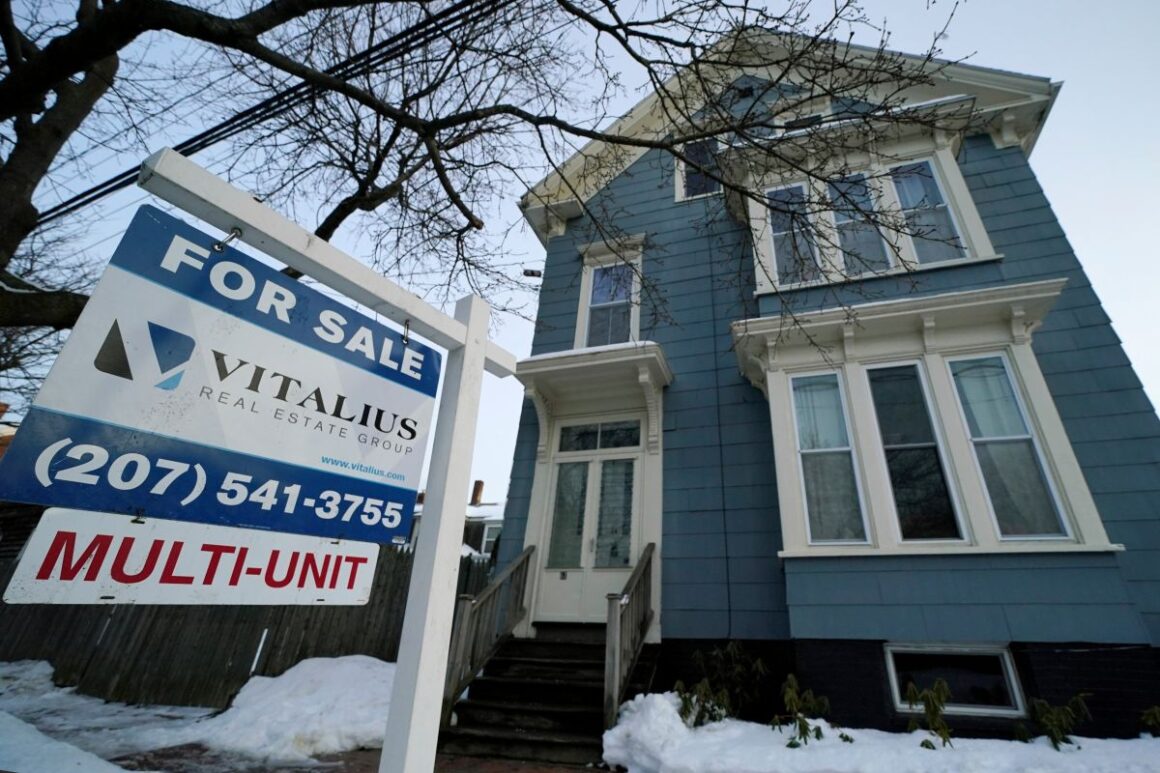Maine’s shortage of affordable housing has led to calls to aggressively build new homes and apartments: up to 84,000 more by 2030, according to a 2023 state report frequently cited by Maine media.
But other numbers paint a more complicated picture, showing how it can be deceptive to focus solely on this statistic, as housing can become less affordable even if construction outpaces population growth. That’s exactly what has happened in Maine over the last 50 years.
According to U.S. Census data, the construction of new housing units in Maine has outpaced population growth since 1970, statewide and in every county. Maine now has more housing units per person than it did 50 years ago.
The big change is neither the growth in population nor a decline in housing construction. Rather far fewer people are living in each housing unit: 2.5 in 1970 versus 1.8 today. That’s a 30-percent decline in 50 years.
If Mainers returned to the number of people per housing unit that was typical in 1970, the state could house an additional 500,000 residents without erecting a single new building.
“It’s really quite an astonishing statistic when you look at it,” said Evan Richert, a retired planner and former director of what was the Maine State Planning Office. “And it’s driven by demographic factors at both ends.”
On one end, Richert said, are young adults having fewer children, and later in life. On the other end are older Mainers who are living longer, own single-family homes and don’t want to move.
“It’s a hard question, how to make better use of the homes we have, but it’s worth raising,” Richert said. “It deserves more discussion. I’m not sure what the answer is. People value their privacy.”
Abraham Dailey, a housing consultant in Raymond, agreed with Richert on the demographic factors driving the trend. Dailey cited Kittery as an example. Although the town saw very little population growth between 1980 and 2010, it had steady housing growth of about 500 units per decade.
Dailey also cited the mismatch between the housing that is in demand and the homes that are being built. Many Mainers are looking for smaller starter homes, one-to-two bedroom apartments or accessory dwelling units (in-law apartments), while much of the new construction is of single-family homes on a few acres, arranged in the pattern known as sprawl.
Planners and policy wonks have seen this coming for years. The trend was predicted in a 1989 Commission on Maine’s Future report.
“By 2010, nearly half of Maine’s population will be over the age of 40 and almost three quarters of the households will be without children,” the authors wrote. “Household size will continue to decline as the population ages.”
The trend of housing production outpacing population growth is exaggerated in Maine, partly because its residents are the oldest in the nation, but it is mirrored nationwide. Kirk McClure, a professor emeritus of urban planning at the University of Kansas, has researched this and said it’s poorly understood.
“Many continue to believe in a shortage when the best data (decennial census) say otherwise,” he wrote in an email.
A 2024 Realtor.com report found 33 million extra bedrooms in the United States, more than four times the number in 1980. (And this report dedicated the first extra bedroom in a house to an alternate use such as an office, so it could be tallied as 66 million extra bedrooms.)
Dailey said another element is that some new construction is for vacation houses, and some year-round homes have been converted to seasonal occupancy or short-term rentals. He said it’s easy to focus on these as driving the statewide trend.
“I think probably the most popular explanation would be, maybe that’s all seasonal housing,” Dailey said. “But I don’t think that’s the case. Seasonal housing has been an issue in Maine long before Airbnb, and that just amped it up a bit.”
The 2023 state housing report said the percentage of seasonal housing has been roughly level at about 16 percent.
But Andy Jackson of Dovetail Consulting, a housing development consultant specializing in affordable housing in Maine, said seasonal housing plays a big role in some areas. In the Portland area, he said, “The number of short-term rentals and Airbnbs has gone through the roof.”
This is one of the factors that makes the affordable housing problem look very different in different parts of Maine. In Portland, Jackson said, there’s a lot of investment in housing, while in places like Skowhegan and Rumford there’s often disinvestment: older houses that are falling apart, vacant buildings and absentee landlords.
He said although it’s logical to try to better inhabit existing buildings, their condition sometimes precludes investment, and it makes more sense to tear them down and build new affordable housing.
“Is it worth investing in the old structures?” Jackson said. “In some cases it will be yes. In other cases it will be no.”
The occupancy side of the equation gets less attention than the construction side, in part because the latter has multiple natural constituencies and allies, especially builders, contractors and real estate agents. Few are motivated to speak up for better occupying the tens of thousands of empty bedrooms.
One state initiative, Maine Home Share pilot project hosted by Nesterly, is the result of a bill by former legislator Maggie O’Neil (D-Saco). This is an effort to connect renters seeking housing with older Mainers who have extra rooms. O’Neil’s bill gave a $200,000, one-year state contract to the online platform Nesterly.
Nesterly CEO Noelle Marcus said it makes sense to better use existing buildings.
“This is potential affordable housing that we’ve already zoned for, we already have all the infrastructure lined up, we don’t have to deal with NIMBYism, we don’t have to deal with buying land or construction timelines and costs,” Marcus said.
Marcus said the program received additional state funding for 2025, but Nesterly’s work in Maine is still in the early stages. She declined to provide numbers but said Nesterly has completed “a handful of placements” in Maine. (At least one Belfast resident has used the program.)
The state agencies that sponsored the 2023 report that’s driving so much of the housing discussion in Maine are not focused on this trend of empty bedrooms. The Governor’s Office of Policy Innovation and the Future declined to comment for this story.
In response to the question of whether this pattern deserves more discussion, Maine State Housing Authority spokesperson Scott Thistle said that “there is an interesting sociological discussion to be had” about the changes in family structure.







